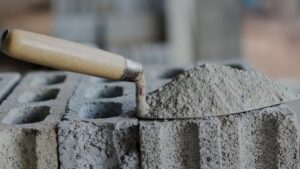
Domestic cement and concrete producers are able to increase their capacity to meet the needs of recovery in any scenario, according to a survey of cement producers and consumers conducted by CBR last year.
“The study showed that even in a situation of high uncertainty, as it is now, with reduced international financing and extremely limited resources of the Ukrainian budget, cement producers and consumers are ready to quickly restore and expand capacity, ready to invest to meet the recovery demand,” said CBR researcher Tatiana Sytnyk at a meeting of the Confederation of Builders of Ukraine during the presentation of the results.
Cement production has partially recovered since 2023, but consumption is heavily dependent on government funding
According to the CBR study, in 2022, cement production fell significantly due to a decline in domestic consumption – to 5.4 million tons compared to 11 million tons in 2021. However, in 2023-2024, production stabilized, reaching 7.4 million tons and 7.97 million tons respectively. Moreover, according to the interviewed experts, the volume of 8 million tons was the maximum value during the war. After the war is over and the recovery begins, peak cement production can reach a maximum of 12 million tons, but the industry will reach this level in the third or fourth year of recovery.
The main question being discussed by the professional community is whether there will be enough cement to meet the challenges of recovery. It was made more acute by a study conducted in 2022 by the State Foreign Expertise Service, which was based on an optimistic scenario that assumed that there would be enough money for the recovery and that the entire process would take three years, said Pavlo Kachur, chairman of Ukrcement.
“Such calculations assumed a shortage of construction materials, particularly cement. But now the trade union community is assessing the challenges for the industry, taking into account the experience of three years of war and predicting that the recovery will begin primarily with demining, strengthening the demarcation line, and restoring energy facilities. We will start large-scale construction in about the third or fourth year,” he commented to Interfax-Ukraine.
Currently, cement plants are unevenly utilized: facilities in western Ukraine have better utilization, while those in the south and east have worse utilization. In 2022, cement plants operated at a loss, with production not covering fixed costs, but the companies retained their staff. In 2023, they reached break-even operations, as production allowed them to cover fixed costs.
As for cement consumers, the study surveyed producers of concrete, aerated concrete and other building materials representing businesses of various sizes, from small to large businesses, from all regions.
“The study showed that our cement is quite acceptable for producers in terms of quality and even price. It rose in price by 20% in 2023 and by 10% in 2024, in line with inflation,” Kachur said.
Two-thirds of the surveyed cement consumers reported that they increased production in 2023, 20% returned to the pre-war production volume, and there were even those who exceeded it (concrete for infrastructure facilities). However, a year later, in 2024, when the survey was conducted, the mood of cement consumers was rather restrained: they identified the risks of a reduction due to the instability of government funding.
The industry is ready to invest in modernization
According to Kachur, in general, the market experienced a slight decline in cement consumption in 2023, as large-scale protection and restoration projects depend on government funding, and civilian developers are not ready to resume full activity at this stage. Thus, residential and commercial real estate projects have significantly decreased compared to pre-war levels. The expert also called the issue of human resources critical for the industry. New specialists need to be trained to replace mobilized and relocated industry employees.
“This (training, design, and fundraising) will take some time, which will be enough for cement producers to fill the market. First of all, to invest in modernization and expansion. In particular, there are already two ready-made projects for the construction of new kilns to meet the highest modern requirements in Kryvyi Rih and Ivano-Frankivsk and the resource of the Baltsem plant (before the war, it produced about 200 thousand tons of cement with a capacity of 4 million tons),” he said.
The study notes that it is unlikely that completely new plants will be built, but a year is enough to modernize the kiln. It is estimated that at least two plants will launch additional furnaces, which will produce 2 million tons. For example, Kryvyi Rih Cement has already received a special permit to develop the Maryansky limestone deposit (60 km from the plant) and has a plan to build a kiln in the quarry itself to produce clinker. Modernization of the Kramatorsk-based Garmata (nationalized) and Balakliya (Baltsem) plants is also possible.
“Cement companies are ready to make rapid investments in modernization and launch additional kilns when the recovery begins to be the first to respond to the market. The companies are waiting for signals to start the expansion. This could be news about the allocation of funds for recovery and/or demand reaching the level of 9.5 million tons,” explained Sytnyk.
Domestic cement competes on equal terms with European cement
Among the reserves for the critical high demand for recovery, experts also mention the possible return of cement imports to Ukraine. Currently, Ukraine does not import but exports this product.
“We must honestly admit that during the war, exports actually save our industry. Before the war, in 2021, total cement exports amounted to about 56 thousand tons, and in 2024 – 1.7 million tons, which is about 15% of what we produce, which is a large share. We are constantly telling our neighbors: “As soon as Ukrainian consumption picks up, the situation will change dramatically, it will be more profitable for us to transport cement to construction sites in Ukraine, and the issue of imports will become relevant,” Kachur says.
The CBR study states that if reconstruction projects are mainly funded by the EU, there is a high probability of an increase in cement imports from Europe, primarily for infrastructure projects.
The expert recalled the possible risks for the industry at this stage, as there is an overproduction of cement in the world today. Therefore, most developed countries can fully cover all the needs of recovery projects, which can harm domestic producers.
“I want to voice my position publicly: the market (at the recovery stage) of Ukraine should be localized as much as possible with domestic products and available only to countries that supported us during the war. Because we have to apply strict measures to countries that support the aggressor country during the war but want to join the recovery to protect their market,” Kachur emphasized.
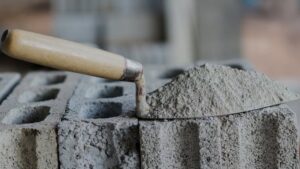
The Interdepartmental Commission on International Trade (ICIT) will review anti-dumping measures against imports of cement from Russia, Belarus and Moldova to Ukraine due to their expiration.
According to a report in the Uryadovy Courier dated May 22, 2024, the anti-dumping duties previously in force by the decision of the ICIT dated May 21, 2019, are extended for the duration of the review procedure.
It is noted that the Commission considered the relevant request for review from PrJSC “Dickergoff Cement Ukraine”, PrJSC “Ivano-Frankivsk Cement” with the support of PrJSC “Kryvyi Rih Cement”, and also studied the report of the Ministry of Economy on the results of the anti-dumping procedure for the review of customs duties due to the expiration of their validity.
“The request contains sufficient evidence that the termination of anti-dumping measures against imports into Ukraine of cement originating in the Russian Federation, the Republic of Belarus and the Republic of Moldova, applied by the Commission’s decision of 21 May 2019, is likely to lead to the resumption of dumping and injury,” the ICIT said in a statement.
The Ministry of Economy has been entrusted with the review of anti-dumping measures. Stakeholders are to register within 30 days.
According to Alyona Omelchenko, Partner and Head of International Trade Practice at Ilyashev & Partners Law Firm, who represented the interests of Ukrainian cement producers, the review process may take up to one year.
“This decision of the Commission is extremely important for the work of Ukrainian enterprises. The initiation of the review of anti-dumping measures by the ICIT will extend the period of application of duties and prevent dumped imports from entering the market until the final decision is made,” Omelchenko said in a press release.
As reported, in 2019, the ICIT applied anti-dumping duties on imports of cement clinkers and Portland cement to Ukraine under codes 2523 10 and 2523 29 at the level of 57.03% for cement from Belarus; 94.46% for cement from Moldova; 114.95% for cement from Russia. The duties were set for a period of five years.
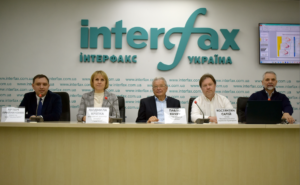
Cement consumption in the domestic Ukrainian market in 2023, which increased by 17% compared to 2022 and reached 5.4 million tons, will continue to grow moderately, according to Pavlo Kachur, chairman of the Ukrcement Association.
“Even in a state of war, we have undergone some adaptation. If 2022 was a shock year, and our cement consumption dropped to 4.6 million tons of cement per year against 10.5 million tons the previous year, in 2023 we adapted to the situation and reached 5.4 million tons. I think this is a good growth for wartime. I don’t think there will be such a jump in 2024, but we will probably reach 6 million tons of domestic cement consumption,” Kachur said at the roundtable discussion “Building Materials. Preparedness for Market Needs for Recovery” at Interfax-Ukraine on Tuesday.
In addition, at the end of 2023, exports amounted to 1.24 million tons of cement, while imports amounted to 23 thousand tons of special cements that are not produced in the country.
According to Kachur, the potential for cement production by enterprises in Ukraine today is 13.6 million tons of cement, while current financial and human resources provide for consumption of 12.5 million tons. Despite the ability of Ukrainian companies to fully cover the market’s needs, it makes sense to plan to expand production, he said.
“We are also preparing for other options. Processes may overlap, and one of them may be the negotiation process with the European Union. If it is successful, European infrastructure projects may also take place during the recovery period. This may lead to increased cement consumption, and we must be prepared for this,” said the head of Ukrcement.
The expert noted that production could be increased in three stages: the construction of new clinker kilns and capacity expansion, the restoration of plants in Balakliya and Kramatorsk, and the construction of new cement plants. The two companies are already considering the construction of two new clinker kilns, which will increase their cement production capacity by 2.4 million tons, but the construction will be launched after they reach the consumption level of 10.5 million tons of cement.
Kachur also emphasized the importance of localizing production in the recovery prospects and protecting the Ukrainian market.
“I support the thesis of maximum localization. This is the only way for Ukraine’s economy to develop. But it is also important to protect our market. We realize that the countries that are donors of funds for the recovery can also supply construction materials. However, I believe that we should have a separate policy for countries that are not on the side of supporting Ukraine today, during the war. We need to think about how to treat them if, after the war, they want to participate in the reconstruction with their materials. I think it would be unfair if they get the opportunity to make money on the Ukrainian market,” he said.
The Ukrcement Association was established in January 2004 through the reorganization of the Ukrainian Concern of Cement Industry Enterprises and Organizations Ukrcement.
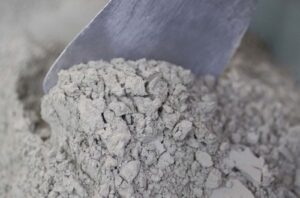
Ukrainian construction product manufacturers are actively preparing, and some are already ready to work in accordance with EU Regulation 305/2011 on the quality of construction products, Natalia Duzhylova, deputy head of the State Inspectorate for Architecture and Urban Development, told Interfax-Ukraine.
“One of the main issues that needs to be addressed (to work in accordance with European standards) is the lack of a full-fledged quality infrastructure, including a network of testing laboratories equipped with the necessary equipment, which makes it impossible to assess the conformity of construction products. Currently, eight testing laboratories in Ukraine have received the appropriate accreditation, which can provide testing services under Regulation 305 for 16 out of 35 categories of construction products,” she said.
The Deputy Head of the SIAG gave the example of the cement industry, which is fully prepared for the implementation of the C05 Regulation even from January 1, 2024. This fundamental industry is a leader in the implementation of European legislation, and producers are fully prepared to work according to European standards. In particular, the standards have been translated, laboratories are operating, and electronic manufacturer’s accounts in the Unified State Electronic System in the Construction Sector (USESCS) have been set up, where manufacturers upload declarations of conformity for cement products.
As for other building materials industries, most of the standards have already been translated, but in the current economic situation, it is difficult for manufacturers to secure the purchase of new testing equipment for laboratories.
“Some industries have also been actively preparing for industrial visa-free travel in advance. For example, the cable industry had two laboratories fully equipped for accreditation. However, one of them was completely destroyed by the enemy, and the other is located on the temporarily occupied territory,” Duzhylova cited an example.
Investing in laboratory equipment that analyzes the quality of building materials and compliance with standards is a significant investment ($0.5-2 million). There should be at least two laboratories for each type of product: one to test the product and the other to monitor it as needed.
“We are now turning to donors for help. According to the law, the grant recipient can be a public or private institution, or an educational institution, which is also an option. In many European countries, such laboratories are set up on the basis of educational institutions and universities with research centers,” said Duzhylova.
Among the industries that are already actively working with donors on this issue, she named the Window Industry Association. “The Window Industry Association has successfully negotiated with UNIDO and received funding for laboratory equipment. The laboratory in Kryvyi Rih has already received accreditation. The second laboratory will be opened in Rivne in the near future,” said Duzhylova.
As reported, the law “On the provision of construction products on the market”, which ensures the implementation of the provisions of EU Regulation 305/2011 on the quality of construction products in Ukrainian legislation, was adopted in 2020 and entered into force in 2023. Starting from January 1, 2023, all construction products in Ukraine can be put into circulation and made available on the market in accordance with the requirements set out in Regulation 305 and the relevant regulatory technical specifications. Given the martial law and existing administrative and financial barriers, the previous Regulation was extended (CMU Resolution No. 1764 dated 20.12.2006), and until 2025 this Regulation is valid in Ukraine in parallel with the 305th.
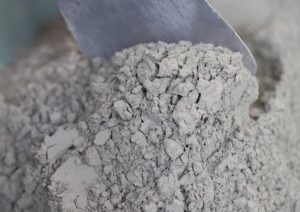
Ukrainian-made cement should become a key material for reconstruction, and at the peak of reconstruction the market could reach 15 million tons of products, or more than $1 billion a year, according to Ukrcement.
“In the production of building materials, we can really compete with foreign producers by taking advantage of logistics. In addition, the average price of cement in Ukraine is more than 30% lower than in other Central and Eastern European countries. Tales of “cheap imports” are just private interest,” the association said.
At the same time, the cost of cement has increased significantly over the past three years. According to Ukrcement, since 2020, the cost of energy has increased by more than 200%, coal by 280%, and transportation by 317%. At the same time, energy and logistics account for 72% of the cement production cost structure.
The association believes that the state has two main tasks in managing the recovery: maximum transparency in the selection of contractors and localization.
The potential of Ukraine’s cement industry is 13.6 million tons of cement annually, said Lyudmyla Krypka, executive director of the Ukrcement Association. At the same time, companies are preparing for consumption growth and are planning to expand their capacities.
“The cement industry is probably the only heavy industry in Ukraine where players have modernized their production facilities to meet the quality and ensure the required production volumes. We are preparing for a possible increase in cement consumption. At least two companies already have plans to build additional clinker kilns,” the expert told Interfax-Ukraine.
Ukrcement Association was established in January 2004 through the reorganization of the Ukrainian Concern of Cement Industry Enterprises and Organizations Ukrcement.